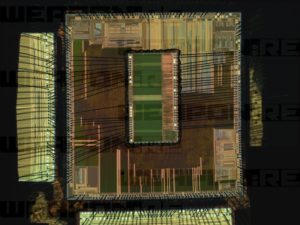Clone STM32F101R6 Microcontroller Program
The advanced-control timer (TIM1) can be seen as a three-phase PWM multiplexed on 6 channels. It has complementary PWM outputs with programmable inserted dead times by Clone STM32F101R6 Microcontroller Program. It can also be seen as a complete general-purpose timer. The 4 independent channels can be used for:
- Input capture
- Output compare
- PWM generation (edge or center-aligned modes)
- One-pulse mode output
If configured as a standard 16-bit timer, it has the same features as the TIMx timer. If configured as the 16-bit PWM generator, it has full modulation capability (0-100%) in order to Restore DSP IC Controller Texas Instruments TMS320F241PG. The counter can be frozen in debug mode.

Many features are shared with those of the standard TIM timers which have the same architecture. The advanced control timer can therefore work together with the TIM timers via the Timer Link feature for synchronization or event chaining.
There are six synchronizable general-purpose timers embedded in the STM32F100xx devices (see Table 3 for differences). Each general-purpose timers can be used to generate PWM outputs, or as simple time base.

STM32F100xx devices feature three synchronizable 4-channels general-purpose timers. These timers are based on a 16-bit auto-reload up/downcounter and a 16-bit prescaler for the purpose of Unlock ARM Base STM32F101CB Microprocessor. They feature 4 independent channels each for input capture/output compare, PWM or one-pulse mode output. This gives up to 12 input captures/output compares/PWMs on the largest packages of Clone STM32F101R6 Microcontroller Program.

The TIM2, TIM3, TIM4 general-purpose timers can work together or with the TIM1 advanced-control timer via the Timer Link feature for synchronization or event chaining after STMicro STM32F101RB MCU Cracking.
TIM2, TIM3, TIM4 all have independent DMA request generation. These timers are capable of handling quadrature (incremental) encoder signals and the digital outputs from 1 to 3 hall-effect sensors. Their counters can be frozen in debug mode to facilitate the progress of Recovering MCU Flash Memory.


